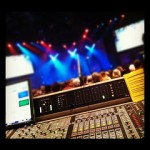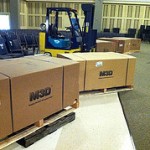
Prioritized Learning

This is for everyone who’s on that path learning to mix and refine their craft. I believe the nature of learning how to mix is that you typically end up doing a lot if not most of it “on the job”. As you’ve probably figured out there are many facets to mixing, so it can be easy to be overwhelmed early on. While the nature of the process is you often have to learn a lot of different things all at the same time, I think there can be a benefit to prioritizing what you’re focused on learning. In other words, you’re gonna get your hands in all of this to a certain extent any time you’re mixing, but you should focus on refining certain skills one at a time. What follows is my personal recommendation for what order to focus on things.
1. Tone
When it comes to mixing, I think the first thing you need to really get a handle on is tone. Basically, do the things in the mix sound good? Is there a good frequency balance within individual sounds and across the entire mix?
Note that I’m not calling this EQ because tone goes beyond that, although, learning how to EQ things properly is part of this. Mic positioning is another part. And yet another part is learning to talk directly with the band about sounds. I’ve talked before about how you need to start at the source, and that means Tone. You should be able to push up a fader and have that thing sound good to start with. You might mess with it later to get it to sit with the rest of the band, but I think you need to figure out how to get things to be good on their own first and foremost.
Now, I say focus on mastering Tone first because I think it’s the largest contributing factor to bad audio experiences. For example, I recently went to see a classic, well-known artist, and it was one of the most disappointing sonic experiences I can remember largely because the frequency spectrum where we were sitting was incredibly out of balance. I pulled out my handy iPhone RTA at one point to confirm what I was hearing because I couldn’t believe it was so bad at that high profile of a show. Lo-and-behold there was a 10 dB dip in the low-mids resulting in a mix without any fullness or warmth.
While the mix at that show wasn’t always to my tastes, by-and-large it was solid. However, the thing that ruined the concert for me was the frequency spectrum out of balance. All night long it was like listening to a bad clock radio with subs, and personally, I am fed up with paying for tickets to listen to shows where the frequency balance is out of whack. We had some of the worst seats possible for the show, but we still ended up paying over $200 for the entire night out, and I’m sorry, but there’s no excuse for me listening to what was painful audio when I pay that kind of money.
And even if folks aren’t paying to listen to your mixes, you still need to get a handle on this. If you are mixing in a church, the balance of the frequency spectrum may be the biggest factor in whether people think things are too loud. If your mix is too bright and thin ala my aforementioned concert experience, odds are some folks are going to think your mix is too loud. That particular show I was at was only measuring in the low 90’s dBA where we were sitting, but it was still too loud because when it doesn’t sound good, it’s ALWAYS too loud.
So you have to get a handle on the frequency spectrum and master Tone. Getting tone right will get you 75-90% of the way there in most cases, in my opinion.
2. Level Balance
Level balancing is part two of mixing 101, and the next thing to focus on. Here you need to work on getting the different instruments and sounds in the mix properly balanced against each other.
You might be wondering why this isn’t the top priority for me. Well, for some folks it might be, but I think there can be a lot of subjectivity in this especially when you consider that level balance is a moving target. Over the course of a song, different instrumentation may change in importance and things may need to get pushed and/or pulled back at times to highlight elements.
Level balance is essential to the mix, but I think there is a lot more leeway in terms of getting the balance right compared to Tone. If the drums are a little buried and some of the other instrumentation is a little low or high in the mix but you can still hear the vocal clearly, most people are going to be OK with that and forgive that things weren’t just right. But if something is too bright and painful or muddy and unclear, that’s the kind of stuff that rubs people the wrong way. So get Tone right first, and then focus on perfecting your level balancing abilities.
3. Dynamics Processing
This is compression, limiting, gating, expansion, etc. And, No, you don’t need to learn this before the first two because it’s only in recent times that every console that seems to hit the market has all these bells and whistles available. Just 10 years ago most live consoles didn’t come with any of this stuff. In other words, many engineers–myself included–mixed for many years with little or no dynamics processing. So don’t worry about this stuff too much if your tones are a mess and your level balancing needs work.
All that said, mastering dynamics processing is one of those things I think really adds polish to a mix. It’s not the only thing, but it is a big part of the the sound of commercial recordings and what people consider to be a professional sounding mix. You can get a pro mix without this stuff in some cases, but for things like rock and roll or pop I think it’s kind of an essential ingredient. It’s also going to affect your Tone and Level Balance, which is why I think it’s best to work out those abilities first. When you’ve mastered Tone and Level Balance, the effect of dynamics processing on those two things will be more easily apparent.
4. FX — reverbs, delays, chorus, harmonizers, flangers, etc, etc, etc.
Effects are another one of those things that can really move a mix to the next level. I suppose this could go in the third slot in place of dynamics processing, but it’s really only in the last couple of years that I’ve really started digging in on effects. One of the keys to using these is often subtlety which is one of the reasons why I put this at #4. When you have mastered the three things above, your sensitivity to subtleties in the mix will likely be tuned up making it much easier to start mastering FX.
5. Tricks
When you’ve mastered all the other stuff, tricks are really all that’s left. These can be things like parallel compression, using a split-harmonizer, side-chaining things, etc. Tricks are fun, and I actually wrote an article on tricks, or at least how tricks aren’t really tricks at all last year. To me, mixing tricks are really just advanced techniques. But, it’s best to learn all the other stuff first because then the tricks make a lot more sense.
So there are 5 areas to focus on, and how I would prioritize them. And let me reiterate and reclarify this: you’re probably going to be doing some if not most of these things every time you mix no matter where you’re at in skill/experience. So the idea here isn’t to only do one of these at a time until you master it; that won’t work because every time you mix you’re dealing with Level Balancing and Tone. Instead, the idea is you prioritize your focus on one of these areas until you master it.
For example, if you’re brand spanking new to mixing, you should, in my opinion, be focusing the bulk of your energy/brain-power/listening/etc. on Tone until you can get really good tones every time.
Here’s another way to think of this: you should only be letting one of these areas keep you up at night.
The idea is when you prioritize one thing or area to focus on, you progress much faster in that area which then makes mastering the next area a lot easier and faster. If you’re new to mixing or trying to figure out how to move to the next level, I suggest you give this little guide a shot and see what happens with your mixes in the coming months.

 Previous Post
Previous Post Next Post
Next Post


